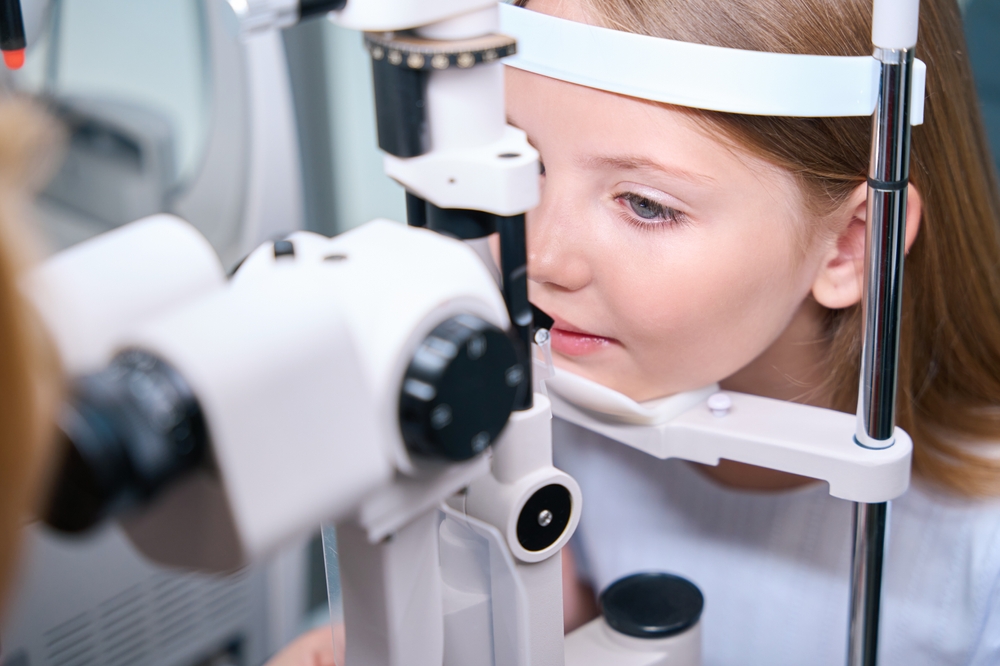
Optimal vision is crucial for children's learning and overall development. Children rely heavily on their visual abilities to navigate the world, process information, and thrive in academic and social settings. From reading and writing to playing sports and interacting with peers, clear and comfortable vision is essential for a child's success.
Unfortunately, many eye conditions can go undetected in children, leading to potential learning difficulties, behavioral problems, and long-term vision impairment. Regular pediatric eye exams play a vital role in identifying and addressing these issues early on, ensuring your child has the best possible chance of reaching their full potential.
Common Eye Conditions Parents Should Be Aware of in Children
As a parent, it's important to be aware of the most common eye conditions that can affect children. These include:
Refractive Errors: Nearsightedness (myopia), farsightedness (hyperopia), and astigmatism can all impact a child's ability to see clearly and may lead to headaches, eye strain, and poor academic performance if left untreated.
Amblyopia (Lazy Eye): This condition occurs when one eye develops weaker vision than the other, often due to a misalignment of the eyes (strabismus) or a significant difference in refractive error between the two eyes.
Strabismus: Crossed eyes or misaligned eyes can cause double vision, eye strain, and social/self-esteem issues if not addressed.
Color Vision Deficiencies: Also known as color blindness, this condition can make it difficult for children to distinguish certain colors, potentially impacting their ability to learn and perform certain tasks.
Early detection and intervention are crucial for managing these and other eye conditions, which is why regular pediatric eye exams are so important.
The Role of Regular Pediatric Eye Exams in Early Detection
Regular pediatric eye exams play a vital role in the early detection and management of vision problems in children. These comprehensive examinations can identify issues that may not be immediately apparent to parents or teachers.
During a pediatric eye exam, the optometrist will assess a child's visual acuity, eye alignment, focusing ability, and overall eye health. They may also perform specialized tests to detect conditions like amblyopia, and other issues that could impact a child's development and learning.
By catching these problems early, optometrists can recommend appropriate treatment, such as corrective lenses, or other interventions. This early intervention can help prevent or minimize the long-term effects of vision problems, ensuring your child can thrive in all aspects of their life.
How Often Should Kids Have a Pediatric Eye Exam
Children generally need a pediatric eye exam at different stages of their development to ensure healthy vision. Here's a recommended schedule:
Newborn to 6 months: A comprehensive eye exam is often part of a newborn's checkup to detect any early signs of eye problems.
6 months to 1 year: Another exam should be done by the time the child reaches 6 months to 1 year old to monitor visual development.
3 to 5 years: Around age 3, a more detailed eye exam is needed to check for visual acuity, focusing, and eye alignment.
Before starting school (around age 5 to 6): This is an important time for an eye exam to ensure your child is ready for school with clear and comfortable vision.
School-age (6 years and older): After starting school, kids should have an eye exam every 1 to 2 years, even if no vision problems are suspected. This ensures that any issues that might affect learning or development are caught early.
These are general guidelines, and your child’s optometrist may recommend more frequent exams if they identify any specific concerns or risk factors.
Signs That a Child May Need a Pediatric Eye Exam
While regular, scheduled eye exams are essential, there are also certain signs that may indicate your child needs an eye exam sooner than the recommended schedule. These include:
Frequent eye rubbing or blinking
Complaints of headaches or eye strain
Difficulty concentrating or paying attention
Tilting the head or covering one eye when trying to focus
Holding books or devices too close to the face
Experiencing double vision or seeing blurred images
Struggling with poor hand-eye coordination or depth perception
If you observe any of these signs in your child, it's important to schedule an eye exam as soon as possible to identify and address any underlying vision problems.
Prioritizing Your Child's Vision Health
Ensuring your child's optimal vision is a crucial aspect of their overall health and well-being. By prioritizing your child's vision health and adhering to the recommended eye exam schedule, you can help set them up for success in school, sports, and social interactions. Healthy eyes are the foundation for a child's learning, development, and overall quality of life.
To ensure your child's eyes are healthy and their vision is optimized for learning, schedule a pediatric eye exam with Family Vision Clinic. Visit our office in Wilmington, North Carolina, or call (910) 392-4414 to book an appointment today.









